Photos: Grizzlies & Black Bears Cross the Trans-Canada Highway
Wildlife passes
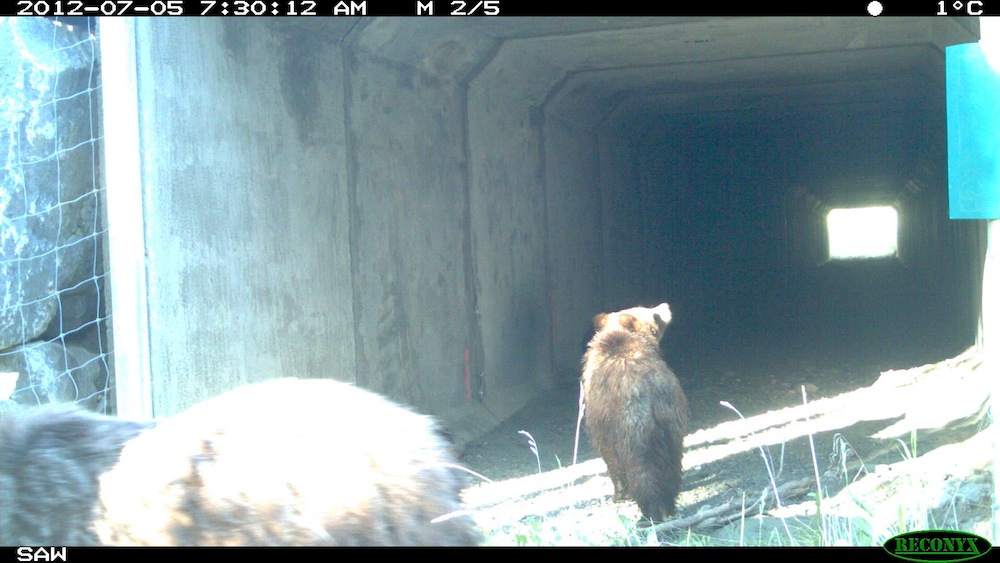
To help wildlife safely navigate their natural habitats, crisscrossed with human-built roads and other structures, conservationists have built special crossings. And it turns out some four-legged furballs are utilizing these bridges. A genetic study by Montana State University scientists revealed, for instance, that grizzly bears (Ursus arctos) and [black bears (Ursus americanus) pad across the Trans-Canada Highway through underpasses and overpasses. The research, detailed Feb. 18, 2014, in the journal Proceedings of the Royal Society B, suggests at least one way to keep bear populations healthy in an increasingly human-impacted world. "It is clear that male and female individuals using crossing structures are successfully migrating, breeding and moving genes across the roadway," Michael Sawaya of Montana State University and his colleagues wrote in the journal article.
Here, a grizzly bear is using a box culvert underpass to traverse across the Trans-Canada Highway. [Read more about the underpasses for grizzlies and black bears]
Swapping genes
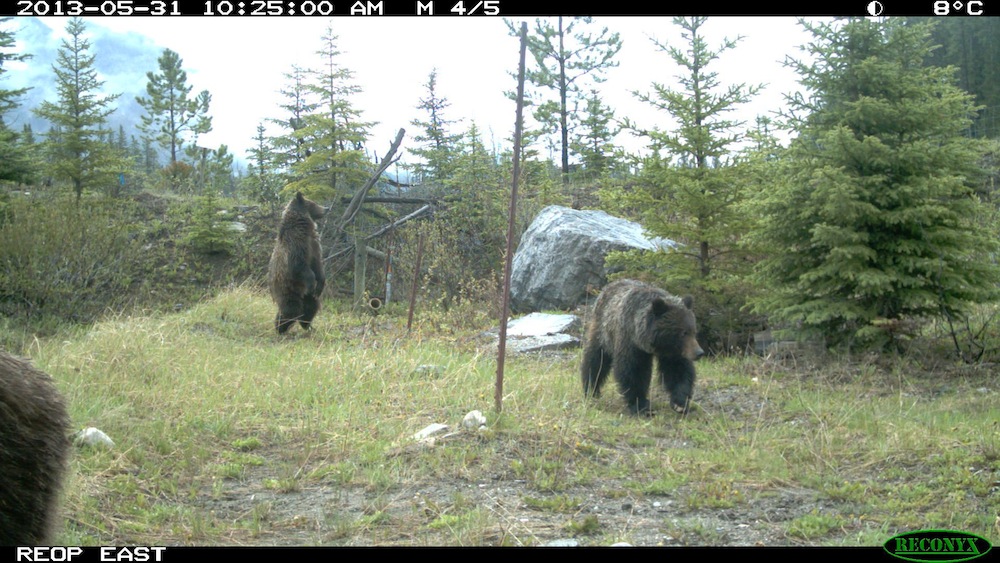
About 47 percent of black bears and 27 percent of grizzly bears at Banff National Park, Canada, that used the crossings bred successfully, Michael Sawaya of Montana State University and his colleagues discovered. Here, a grizzly bear family using one of the overpasses to cross the Trans-Canada Highway.
Snagging bear hair
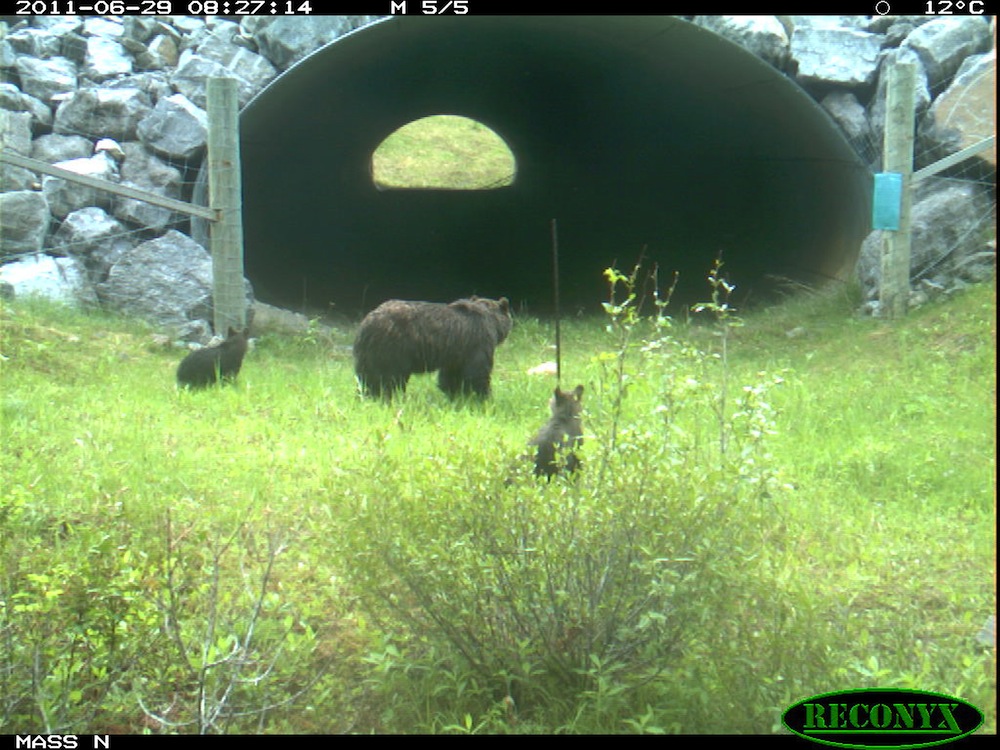
The researchers from Montana State University conducted their study for three years, beginning in April 2006. Their objective was "to evaluate the effectiveness of wildlife crossing structures to allow genetic connectivity for bears in BNP [Banff National Park]," they wrote in the journal article. To do so, they collected hair samples using hair traps and bear rubs (trees and other natural objects that bears rub their bodies on). Here, a grizzly bear passes through a hair-sampling system.
On the move
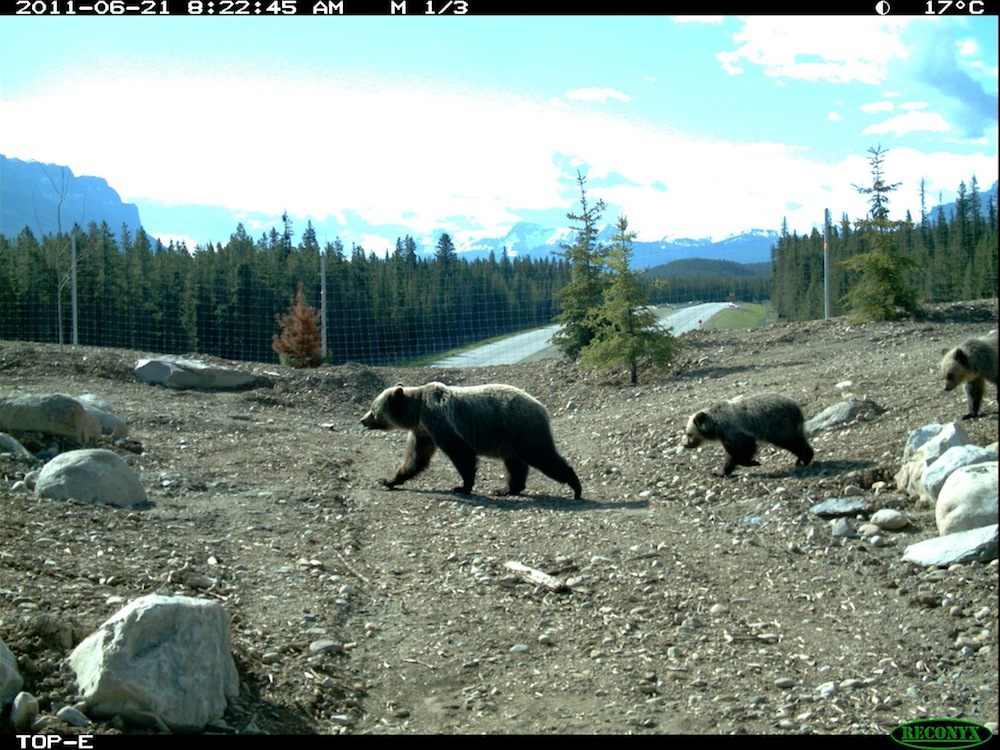
A grizzly bear family uses new overpass in the Canadian Rockies. They may be walking in this shot but grizzly bears can really move if they want to. Not only are the brown bears strong swimmers, they can clock 35 mph (56 km/h) in a short sprint, according to the National Wildlife Federation. Cubs can use their claws to climb trees — an ability they lose as they mature and their front claws grow longer.
A way across
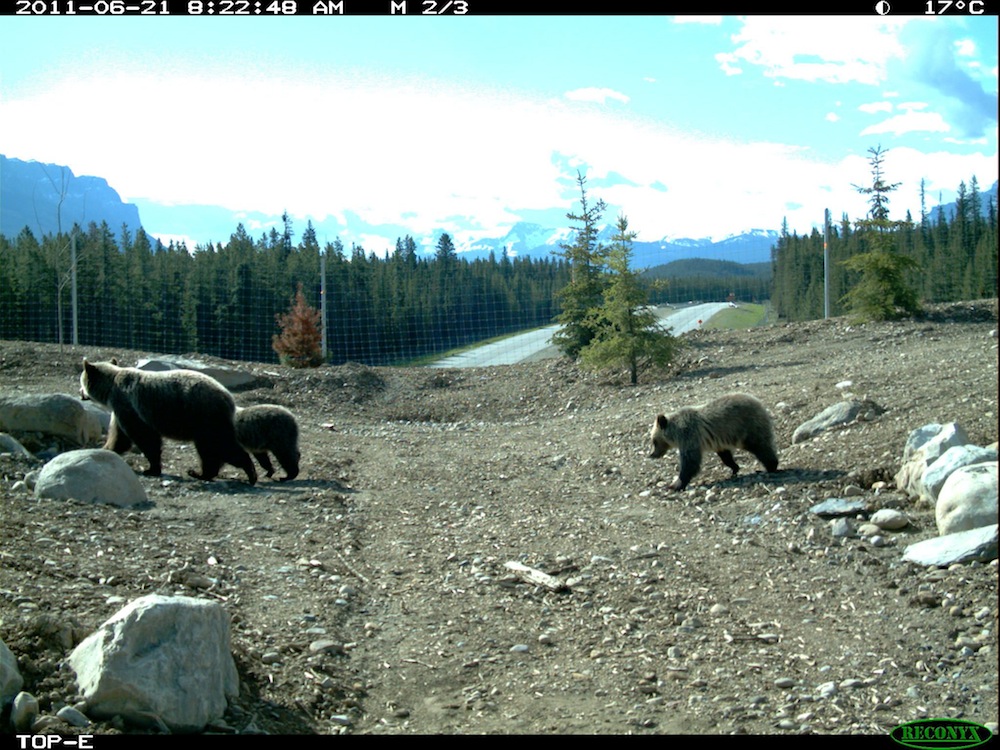
Here, a grizzly bear family uses a new overpass in the Canadian Rockies. The genetic study was spurred by a lack of information on the success of these crossings. "Wildlife crossing structures are designed to serve as small-scale corridors to increase permeability across highways, but few studies have examined their effectiveness beyond simply documenting animal movements," the researchers wrote in the journal article.
All in the family
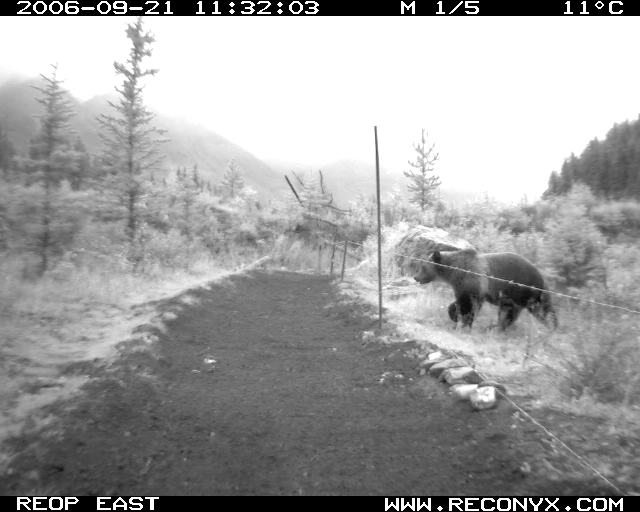
Grizzly bears are mostly solitary animals, except for the few years after a mama bear gives birth to cubs. A mother grizzly will feed and protect her young for two-plus years, according to the National Wildlife Federation. When a cub reaches 2.5 years of age, the little one typically separates from its mother; this separation often happens when the mother is ready to mate again, as the "father" can harm the cubs, according to the NWF. Here, a grizzly bear family uses a metal culvert underpass in the Canadian Rockies.
Get the world’s most fascinating discoveries delivered straight to your inbox.
Hair for science
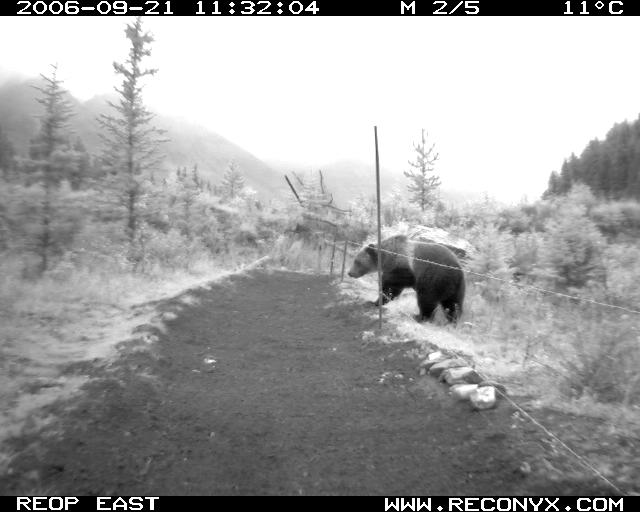
The hair-sampling system consisted of two parallel barbed wires stretched between metal stakes at 30 and 70 centimeters (12 and 28 inches), respectively. The systems were set up perpendicular to the line of movement of the passing bears, the researchers noted. Here, a grizzly bear passes through one of these hair-sampling stations in the Canadian Rockies.
Ton o' hair

The researchers collected a lot of hair from black and grizzly bears. In their paper, they noted a total of 1,317 hair samples from the wildlife crossing structures, 2,009 from hair traps and 6,543 from bear rub trees. Here, a grizzly bear passes through one of the hair-snagging stations.
Success!

The wildlife crossings in the Canadian Rockies do, indeed, seem to be working, the researchers said. Here, a grizzly bear walks through a hair-sampling station.
Connecting carnivores

"We concur that wildlife crossing structures may be helping to counteract the effects of fragmentation on grizzly bears across the TCH [Trans-Canada Highway]," they wrote in the journal article, adding that they documented a female grizzly from the south who used a crossing to traverse the Trans-Canada Highway and successfully mate with a male grizzly bear from the north. This observation "provides compelling, though anecdotal, evidence that migration, reproduction and admixture simultaneously occur at crossing structures. In conclusion, we have demonstrated the ability of crossing structures to provide genetic connectivity for two fragmentation-sensitive carnivore species across a major transcontinental highway."



